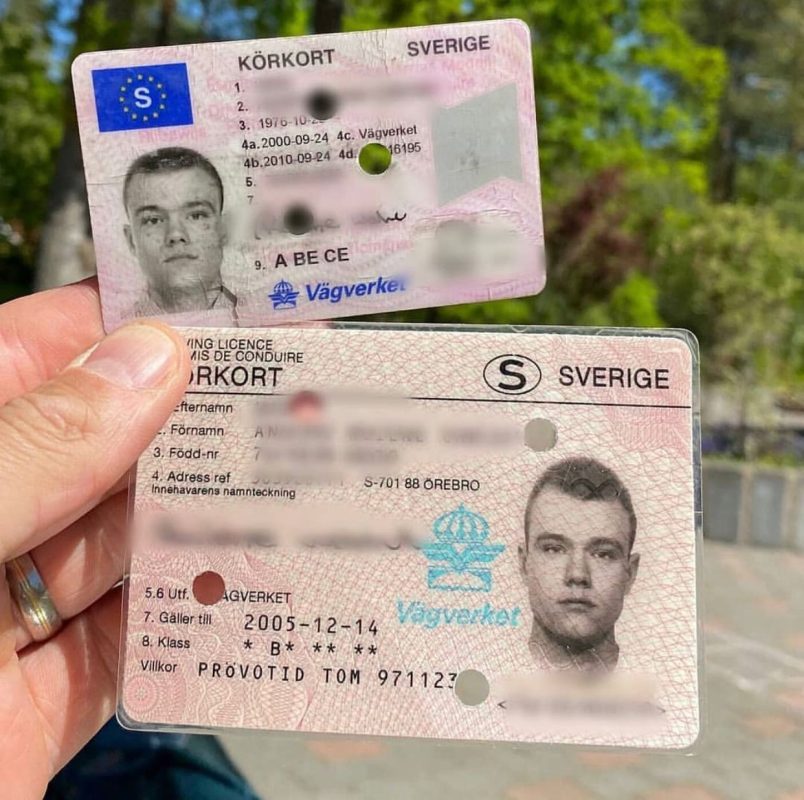Why Nobody Cares About Driving License Id-Handling 2025
페이지 정보
작성자 FG 작성일25-08-20 06:18 (수정:25-08-20 06:18)관련링크
본문
The Future of Driving Licenses: ID Handling in 2025
As technology continues to progress at an extraordinary rate, different sectors are embracing innovations to enhance user experience and performance. One of the locations experiencing considerable improvement is identity management, especially worrying driving licenses. With the introduction of digital licenses and advanced identification techniques, the landscape of driving license ID handling is anticipated to undergo significant modifications by 2025. This short article explores the expected advancements in driving license ID handling, the implications for users, and answers regularly asked concerns about the future of driving licenses.
The Evolution of Driving Licenses
Driving licenses have typically worked as a way of recognizing an individual's authority to run an automobile. They likewise serve multiple secondary purposes, consisting of age confirmation and identity verification for banking and travel. However, the physical card system has limitations, KöRkortet including risks of counterfeiting, loss, and out-of-date information. As society seriously counts on efficient and protected identification systems, the transition towards digital licenses is becoming increasingly popular.
Existing Trends in Driving License ID Handling
Digital Licenses: Many states are piloting digital driving licenses that allow users to save their qualifications on their mobile phones. These digital licenses are designed with advanced security features, including biometric information, and can be scanned or shared securely.
Blockchain Technology: Some jurisdictions are checking out blockchain to boost the security and authenticity of driving licenses. This innovation guarantees that details can not be damaged and that the data is easily proven.
Facial Recognition: Increasingly utilized in recognition practices, facial acknowledgment technology can accelerate the process of verifying a person's identity versus their driving license. This innovation also assists minimize fraud and maintain the integrity of the licensing systems.
Multi-Functional Licenses: Future driving licenses may integrate extra features such as health records, travel documentation, and even payment systems, supplying a thorough identity service.
The Benefits of Digital Driving Licenses by 2025
The shift towards digital driving licenses provides several advantages, consisting of:
Convenience: Users can access their licenses anytime, which eliminates the requirement for physical cards. This is especially beneficial when individuals forget their license, as digital copies can be recovered quickly.
Security: Advanced security steps can decrease the risk of identity theft, fraud, and unapproved duplication. Digital licenses frequently consist of encryption and biometric confirmation.
Performance: Reduced wait times at government workplaces and throughout traffic stops, as law enforcement can confirm digital licenses immediately.
Implications for Users
While the advancements in driving license ID managing present various advantages, they likewise include challenges. Users require to adjust to brand-new technology and guarantee they understand the changes and their ramifications. Here are some factors to consider:
Privacy Concerns: With increased digital footprints, there will be heightened issues over information personal privacy and how biometric information is kept and utilized.
Availability Issues: Individuals without access to smartphones or digital technologies may face barriers to getting and using digital licenses.
Regulatory Compliance: With different jurisdictions adopting various systems and procedures, users must understand their local laws regarding digital licenses and identification.
Expected Changes in Driving License ID Handling by 2025
| Element | Current Status | Expected Change by 2025 |
|---|---|---|
| License Format | Physical cards | Predominantly digital licenses |
| Confirmation Process | Manual checks | Automated biometric confirmation |
| Security Measures | Standard holograms and functions | Advanced encryption and blockchain |
| Jurisdictional Differences | Fragmented processes throughout states | More standardized national systems |
| User Interaction | In-person renewals and checks | Mobile applications for management |
Frequently asked questions
1. What is a digital driving license?A digital driving license is an electronic version of a conventional driving license that is saved on a mobile gadget. It can be utilized for identification and verification in different situations, with enhanced security features to avoid scams.
2. How will digital licenses improve security?Digital licenses utilize encryption and biometric data, making them harder to create or misuse compared to traditional cards. Additionally, blockchain innovation can ensure data credibility and stability.
3. Will everyone be needed to switch to a digital license?While many jurisdictions are approaching digital licenses, regulations may vary. Users are encouraged to contact their regional licensing authorities for particular standards.
4. What are the possible drawbacks of digital licenses?Some potential downsides consist of personal privacy issues relating to data storage, accessibility problems for individuals without smart devices or digital literacy, and the need for a robust regulatory framework to handle security and user rights.

5. How can I get ready for the shift to digital licenses?Stay notified about local efforts concerning digital licenses, check out readily available mobile applications for handling identification, and cultivate digital literacy to browse brand-new technologies with confidence.
The future of driving licenses and ID handling is poised for significant evolution by 2025. As digital licenses end up being more common, users will experience improved security, convenience, and efficiency. However, along with the advantages come challenges that will need public awareness and adaptation. Stakeholders must prioritize education, policy, and accessibility to ensure a smooth transition that empowers people with the recognition tools of the future. As technology advances, so too will the techniques through which society handles identity, particularly essential in processes as essential as operating an automobile.
댓글목록
등록된 댓글이 없습니다.

